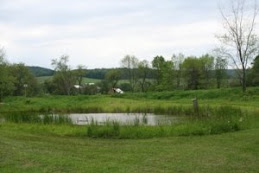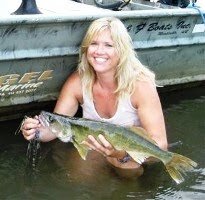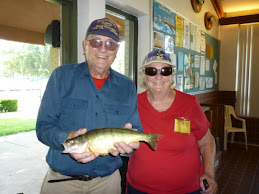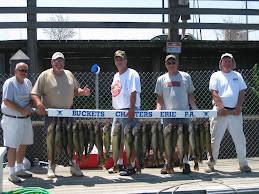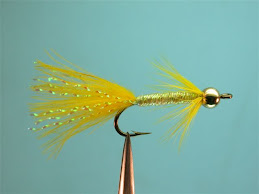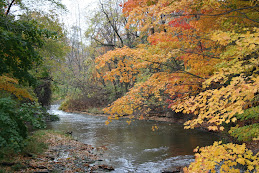
Thursday, October 30, 2008
Rare Mussel Alters River Dredging

Monday, October 27, 2008
Game Commission Moves on Crossbows
Sunday, October 26, 2008
Deer Dispersing Differently Now
 New Penn State Study Released
New Penn State Study Releasedby Deborah Weisberg
photo by James William Shirey
Jim Shirey was surprised to learn the 11-point buck he bagged Oct. 12 had traveled 12 miles beyond its home range.
Yet, the 2 ½-year old with the 18 ¼-inch inside spread was wearing a radio telemetry collar that allowed Penn State University researchers to track its movements and conclude it was a long way from where it had been born.
“I used to figure deer move about a mile,” said Shirey, who shot the deer with a bow near his Clearfield County home Oct. 15. “But the coordinates tell the story. It makes me think about how I’ll hunt in the future. I won’t hunt an area where someone has taken a big buck. I’ll go further out.”
In fact, bucks will move more than 25 miles to find a new home with good cover, according to a just-released Penn State study on the impact of antler restrictions on deer dispersal in the state. By tracking more than 500 deer that originated in Armstrong and Centre counties, researchers confirmed that seven of 10 young bucks are still leaving their natal range---the same as before antler restrictions were implemented in 2002----but more are dispersing in fall than in spring. Dispersal is defined as a one-way, permanent migration, and not just movement within a buck’s normal one-mile home range.
Penn State biologist Duane Diefenbach said his research shows buck density is up slightly, too---an assessment the Pennsylvania Game Commission’s deer management chief Chris Rosenberry would not corroborate. “Getting into population counts is a slippery slope,” said Rosenberry, whose agency helped fund the study, which was conducted January through April in 2002, 2003 and 2004.
“The number of males has increased because yearlings are protected from harvest and older bucks are escaping hunters who often need more time to judge the number of points (on the rack),” said Diefenbach. “At the same time, the number of does has decreased, so we now have a better female-to-antlered buck ratio.”
That has gone from 10 to one to four to one, Diefenbach said, and has generated new behavior.
Older bucks are forcing greater dispersal of yearlings just before the rut in fall. However, deer who survive hunting season and the rigors of winter are likely to be in the same place in spring, because there are fewer does to chase them away, Diefenbach said. “Females kick males out of the areas where they give birth, as a means of controlling in-breeding and preserving the gene pool. With fewer does around, more males are staying in place.”
For hunters, the bottom line is mixed.
“It’s a disappointment for people who think not shooting a button buck will preserve the gene pool, since 70 percent of yearlings will be gone and new ones will come in, anyway,” said Rosenberry, who helped with the study. “The silver lining is, once adult deer disperse and establish a new range, they are unlikely to leave. So the four-point you see in fall---if he survives hunting season and winter----will probably be there in the spring.”
Shirey’s big buck represents a class of 2 ½-year olds now proliferating in Penn’s Woods.
“Prior to antler restrictions, 80 percent of legal bucks were yearlings, 10 to 15 percent were 2 ½ years old, and fewer than 10 percent were 3 and a half or older,” Diefenbach said. “Today, we’re seeing a much greater percentage of 2 ½ year old or older bucks because of antler restrictions.”
And while Rosenberry said game commission surveys indicate most hunters support antler restrictions, some are clearly skeptical.
“I don’t care what the game commission says, the deer aren’t there,” insisted Ken Jones, of Bill's Field and Stream, a Mercer County archery and tackle shop. “We’re in a big deer-hunting area and we’re not seeing the tracks or the rubs and that’s a bad omen. Guys up in the mountains aren’t seeing them either. They’re saying, ‘What’s going on?’”
“The game commission’s got to stop the doe onslaught,” Jones said. “Even farmers don’t want the does shot anymore.”
Mike Maranche, chair of the game committee for the Allegheny County Sportsmen’s League, said he hears both negatives and positives from members. “Some hunters are finding deer. Some aren’t. There’s a lot of criticism of doe tags.”
But Rosenberry said higher doe kills in some areas are needed to control deer numbers, and statistics show the current regulations are putting more, older bucks into hunters’ sights.
“From 2002 to 2004, about 60,000 2 ½-year old whitetails were killed each year. That’s twice as many as hunters were averaging in the five or so years leading up to antler restrictions,” he said.
“The intent of antler restrictions was to protect yearlings from harvest and that has happened. Instead of 10 to 20 percent of yearling bucks surviving, now half are surviving. It used to be the minority of deer were 2 ½ year olds. Now half the harvest is 2 ½ year olds.”
“We have no intention of changing our deer management program,” Rosenberry said, “because it’s working.”>
Thursday, October 23, 2008

Williams Run: A Water to Watch
Makes Top 10 in America List
by Deborah Weisberg
South Sandy Creek Watershed Association vice president Valerie Tarkowski shows PA Association of Conservation District's Justin Griebel plans for Williams Run
photo by Deborah Weisberg
(Irwin Township) Williams Run wends through State Gamelands 39 in Venango County---a densely-wooded tract that blazes with the rich colors of autumn.Hunters who venture into this forested valley would never guess that Williams Run is practically dead---the consequence of old strip mines that ravaged nearby farmland.
That is about to change, though, as work nears completion on a $1 million project to backfill the mine and sweeten Williams Run through limestone beds and settling ponds at its headwaters. Restoring Williams will allow a population of wild brook trout now isolated on an unnamed tributary to expand into Williams, which has the cold water brookies need to survive. The run feeds South Sandy Creek, which merges with Sandy Creek, a stocked trout destination on the Allegheny River.
“Williams is the only problem in a generally good watershed,” says Valerie Tarkowski, of the South Sandy Creek Watershed Association.“Once we clean up Williams, it will benefit everything the water feeds, from fish to aquatic insects. It will release the trout on a trib we call East Branch to at least the lower reaches of Williams. That will push the trout, which are already at the westernmost part of their native range, a little further west.”
Anglers could eventually see brook trout on South Sandy, too, according to Pennsylvania Fish and Boat Commission biologist Al Woomer. "South Sandy already has a low level of wild trout. An improved Williams should populate it more," he says. "The main stem of Sandy is a little too warm, so the brook trout probably wouldn;t go that far. We'll just continue to stock it." To read complete story, click here: http://www.post-gazette.com/pg/08293/920843-358.stm
Wednesday, October 8, 2008

by Deborah Weisberg
Darran Crabtree "noodling" for mussels on French Creek
photo by Deborah Weisberg
(VENANGO TOWNSHIP) - “Noodling” for mussels with Darran Crabtree on French Creek means never seeing a stream bed the same way again.
Though the state’s most ecologically diverse waterway offers some of the best angling in Pennsylvania, its mussel-power is almost hidden. Yet the millions of mollusks---almost indistinguishable from the millions of rocks----are living filters that keep habitat clean.
“They’re fascinating,” says Crabtree, a Meadville-based biologist with the Nature Conservancy, who went wading for mollusks on a recent rainy morning. “A lot of what they do we take for granted.”Crabtree reaches into the water and gently extracts a Kidneyshell from the substrate.
“Many things live on mussels besides algae,” he says. “What we have here is a Caddisfly. Mussels accumulate organic matter and don’t digest it all, so there’s usually a little hot spot…a concentration... of food near its siphon that Caddisflies and other (insects) collect on and benefit from.” A healthy bed of mussels supports a lot of other creatures, he says. “The stream bottom is three-dimensional, with layer after layer of life deep within.” To read complete story, click here: http://www.post-gazette.com/pg/08265/913825-113.stm
Tuesday, October 7, 2008
 DAMS DISMANTLED ON EXCEPTIONAL STREAM
DAMS DISMANTLED ON EXCEPTIONAL STREAM
